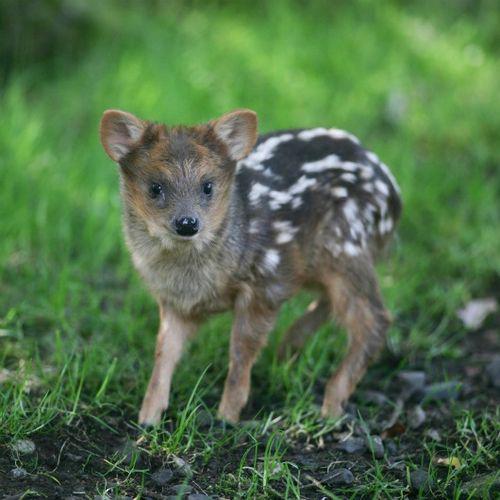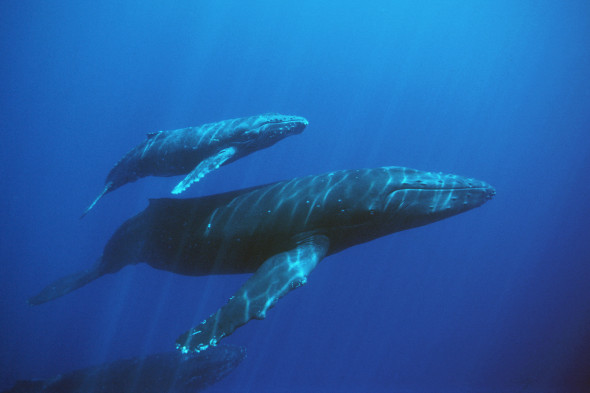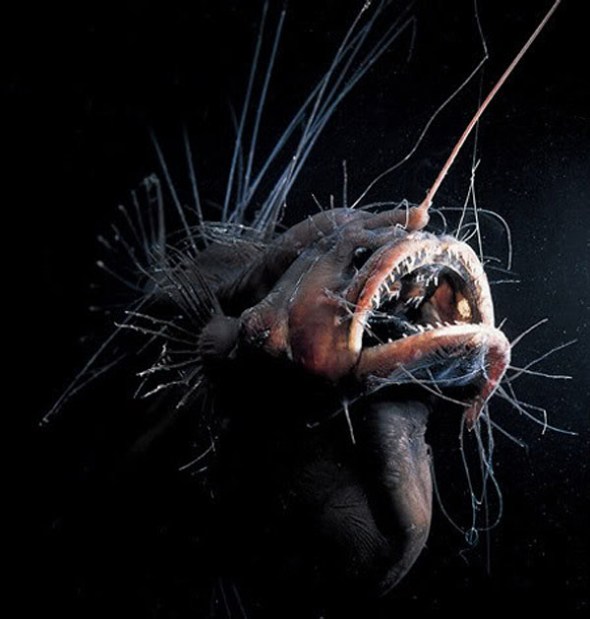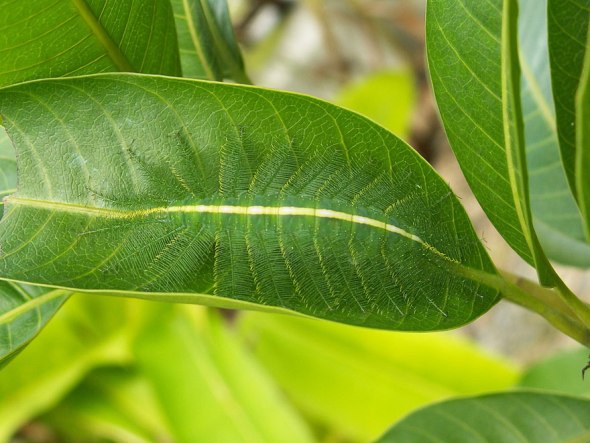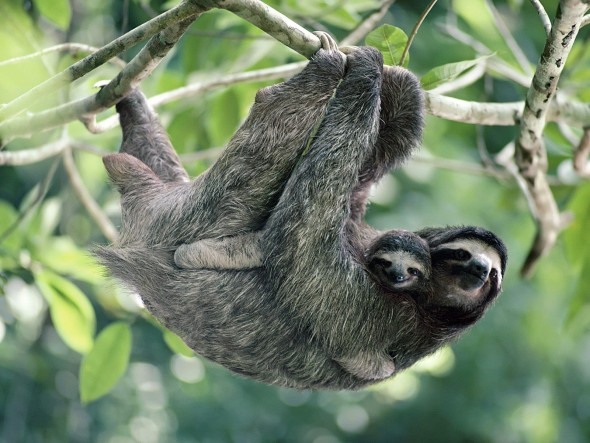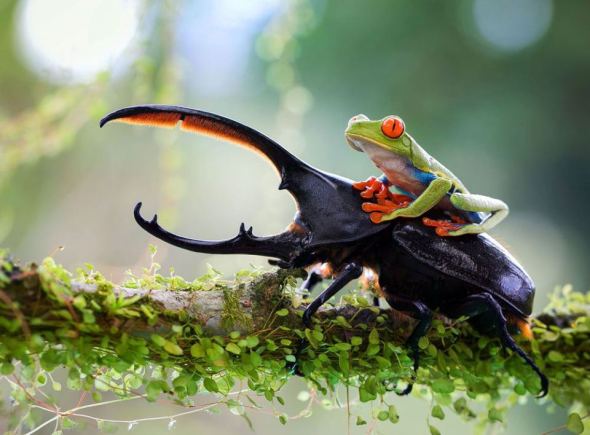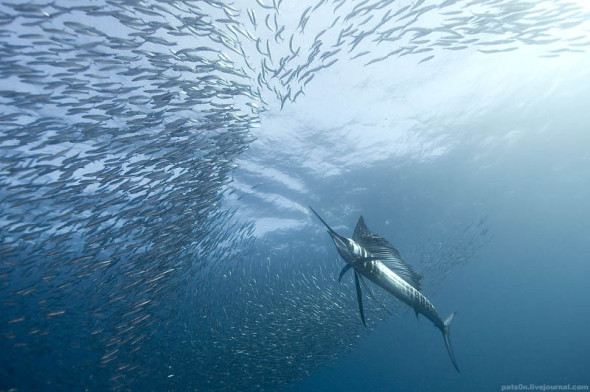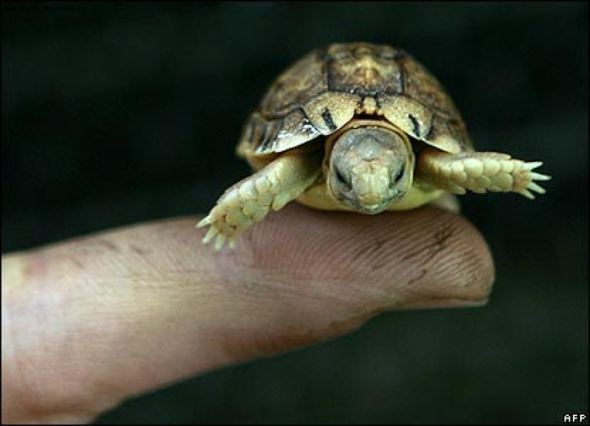Animal Planet - Mother Natures Finest
Mother Nature hides many secrets that we as humans are still fully unaware of. Below is a quick run down of Mother Natures finest specimens of animals that International Animal Rescue Foundation has picked for your information.
In at number one is the smallest deer in the world.
Pudus Deer;
Endangered
The pudús are the world’s smallest deer, with the southern pudú being slightly larger than the northern pudú. It has a stocky frame supported by four short and slender legs. It is 32 to 44 cm (13 to 17 in) high at the shoulder and up to 85 cm (33 in) in length. Pudús normally weigh up to 12 kg (26 lb), but the highest recorded weight of a pudú is 13.4 kg (30 lb). Pudús have small, black eyes, black noses, and rounded ears with lengths of 7.5 to 8 cm (3.0 to 3.1 in). Sexual dimorphism in the species includes an absence of antlers in females. Males have short, spiked antlers that are not forked, as seen in most species of deer. The antlers, which are shed annually, can extend from 6.5 to 7.5 cm (2.6 to 3.0 in) in length and protrude from between the ears. Also on the head are large preorbital glands. Pudús have small hooves, dewclaws, and short tails about 4.0 to 4.5 cm (1.6 to 1.8 in) in length when measured without hair. Coat coloration varies with season, gender, and individual genes. The fur is long and stiff, typically pressed close to the body, with a reddish-brown to dark-brown hue. The neck and shoulders of an aged pudú turn a dark gray-brown in the winter.
In at number two is the loudest animal on the planet the Blue Whale;
Endangered
The blue whale is the loudest animal on the face of the earth. However not far off from the this mega beast is the second loudest animal on the planet being that the Howler Monkey.
The call of the blue whale reaches levels up to 188 decibels. This extraordinarily loud whistle can be heard for hundreds of miles underwater. Theoretical calculations by Roger Payne and Douglas Webb (from the 1970’s) predicted that the loudest whale sounds might be transmitted across an entire ocean. The blue whale is much louder than a jet, which reaches only 140 decibels! Human shouting is 70 decibels; sounds over 120 decibels are painful to human ears. The second-loudest animal on Earth is the howler monkey (Alouatta) from the jungles of Central and South America.
In at number three is the Honduran White Bat;
The only white bat on the face of the planet of which is just that “white” and not albino. Whats so special about the Honduran White Bat though other than its white? Well its the only bat that doesn’t actually live within caves, more rather under heliconia leaves.
Near threatened
The Honduran white bat cuts the side veins extending out from the midrib of the large leave of the Heliconia plant causing them to fold down to form a ‘tent’. They cling to the roof of this tent in small colonies of up to half a dozen individuals, consisting of one male and a harem of females. The tent protects them from rain and predators. Most tent-making bats take flight at even slight disturbances, but researchers in Costa Rica have reported that Honduran white bats take flight only when the main stem of their tent is disturbed, possibly because they are well camouflaged. Although their tents are typically low to the ground (about six feet), sunlight filters through the leaf which gives their white fur a greenish cast. This almost completely conceals them if they remain still. It has been suggested a colony may have a number of tents scattered within the forest. It is one of 15 species of Latin American bats that roost in tents. In the Old World, 3 species of bat from India and Southeast Asia are known to roost in tents.
In at number four is the angriest looking animal on the planet, the Angler Fish;
IUCN Red List - Unknown
In the darkest depths of the ocean where the water is freezing cold, the pressure is enormous and food is scarce lives the angry-looking deep sea anglerfish. This fascinating fish is not only an incredible example of how organisms manage to survive in the most inhospitable environments, it has one of the most bizarre ways of reproducing in the animal kingdom. The deep sea anglerfish is one of the deep ocean’s most fascinating residents. Living at the extreme depths between 1.5 and 2.5 km, their most peculiar appearance is a modified fin that acts as a lure, hanging above their huge mouths containing needle-like teeth. The tip of this “fishing rod” on top of their head is bioluminescent (glowing in the dark) because of bacteria living inside it and attracts prey in a similar way like moths to a lightbulb. By wiggling the glowing outgrowth, it lures prey close enough to devour them whole. Because of thin, soft bones and jelly-like skin, these scary looking fish can expand their jaws and stomach to such an extent that they are even able to actually swallow prey up to twice their own size. In the deep sea where food is very scarce, being able to eat large quantities at once is a great adaptation. Now that’s pretty awesome but weird yet wonderful too..
In an number five is the worlds most camouflaged animal the Common Baron Caterpillar;
IUCN Red List - Unknown
Just take a closer look at the image below. Do you see anything besides a leaf? If you look closer you can catch a glimpse of a tiny little fellow called, the common baron caterpillar. Feeding mostly on mango and cashew nut trees during its larvae stage; they remarkably camouflage themselves and seemingly disappear into foliage. We are sympathizing for the birds which don’t get a chance to swoop on them. However, as soon as they evolve from larvae to butterfly stage, they lose their camouflaging ability. The common baron caterpillars are native to India and Southeast Asia. The males are brown with slight tinges of olive, whereas the females are of paler shades. Their camouflage of course boosts their chances survival. When the common baron caterpillar goes through all stages of life they eventually metamorphose into a butterfly called the common Baron, which is a medium-sized the ‘nymphalid butterfly’. Now this is one species of animal the armed forces need to take a leaf out of “its” book. And no the photograph is not edited.
In at number six the slowest (mammal) on the planet, the Three Toed Sloth;
Near threatened
The three-toed sloth is the slowest mammal on Earth, due to its lack of muscle tissue.It is so sedentary that algae grows on its furry coat. All sloths are built for life in the treetops. The three-toed sloths are tree-living mammals from South and Central America. They are the only members of the genus Bradypus and the family Bradypodidae. The four living species of three-toed sloths are the brown-throated sloth, the maned sloth, the pale-throated sloth, and the pygmy three-toed sloth.. And just to give you a brief glimpse into the sheer speed of the three toed sloth - they travel at a distance of 0.15 kilometers per hour.
In at number seven is the worlds strongest insect, stand aside Mr leaf cutting ant as your title has been beaten. Meet the Rhinoceros Beetle;
IUCN Red List - Unknown
Rhinoceros Beetles can lift 850 times their own weight. To put this into perspective, if a human had the strength of the rhinoceros beetle, it would be able to lift a 65 ton object. If the mighty elephant had equal strength to the rhinoceros beetle it would be able to carry 850 elephants on its back.
The Hercules beetle (Dynastes hercules) is the most famous and the largest of the rhinoceros beetles. It is native to the rainforests of Central America, South America, and the Lesser Antilles. The beetle has also been observed as far north as Southern Veracruz in Mexico. Their title is well deserved, with some able to lift more than 850 times (up to 8 kg lifted) their own weight and some males, rarely, reaching 17 cm (6.75 inches) in length. It is the largest of the six species in the Dynastes genus, and one of the largest beetles known, being exceeded in length by only two other beetles in the family Cerambycidae, Macrodontia cervicornis (specimens of 17–17.5 cm are known) and Titanus giganteus (also up to 17–17.5 cm; several 18+ cm specimens are reputed/alleged to exist). However, if the horns are excluded, both M. cervicornis and D. hercules drop considerably farther down in the size rankings, leaving T. giganteus on top. One reason for this is that the development of the horns is allometric, as well as sexually dimorphic, and thus not strictly correlated to actual body size; it is possible for a female to be much longer, measured from eyes to abdomen, than a male, yet be considered “smaller” simply due to the absence of horns. Worlds strongest man - step aside the title is lost. Picture - This is the moment a red-eyed Costa Rican tree frog hitched a lift on a giant Hercules beetle.
In at number eight the worlds fastest marine mammal the Sailfish;
IUCN Red List - Unknown
Sailfish are the fastest fish in the ocean and have been clocked leaping out of the water at more than 68 mi (110 km) per hour. Size relative to a 6-ft (2-m) man: The two main subspecies of sailfish, Atlantic and Indo-Pacific, range throughout the warm and temperate parts of the world’s oceans.
Sailfish are two species of fishes in the genus Istiophorus, living in warmer sections of all the oceans of the world. They are blue to grey in color and have a characteristic erectile dorsal fin known as a sail, which often stretches the entire length of the back. Another notable characteristic is the elongated bill, resembling that of the swordfish and other marlins. They are therefore described as billfish in sport fishing circles. Both species of sailfishes grow quickly, reaching 1.2-1.5 m (4-5 ft) in length in a single year, and feed on the surface or at mid-depths on smaller pelagic forage fish and squid. Individuals have been clocked at speeds of up to 110 km/h (70 mph), which is the highest speed reliably reported in a fish. Generally, sailfish do not grow to more than 3 m (10 ft) in length and rarely weigh over 90 kg (200 lb), although larger specimens have been seen off the shores of Costa Rica.
In at number nine is the worlds smallest tortoise;
Near Threatened
Speckled Padloper Tortoise: the smallest tortoise in the world is found in South Africa. The itty bitty tortoises grow up to 8-10cm in length. The speckled tortoise (Homopus signatus), known locally as the speckled padloper, and also known internationally as the speckled cape tortoise, is the world’s smallest tortoise. A member of the genus Homopus, it is endemic to South Africa and Southern Namibia. Small but cute, please do not remove them from the wild. These species of tortoise are near threatened.
In at number ten - Killer Siafu Ants;
IUCN Red List - Non-Concern
The legends are well known to people across the world; swarms of destructive ants which consume any creature slow or daring enough to remain within their range, even humans. They overcome their prey, stinging and biting from all sides. In the case of sufficiently large prey, they enter the nasal passages and mouth of the victim and kill it through asphyxiation. The corpse is sliced up into manageable pieces by the powerful mandibles of the insects and carried back to their nest. The stories depict infants and old people as the victims of these ants. The insects invade at night, when most people are asleep, and attack their victims. By the time the prey wakes up, they are completely engulfed by the ants and under attack via bites and stings. The end results are commonly tragic and unsightly. Of course this is somewhat little exaggerated, however not as exaggerated as you may think.
These tales tend to be exaggerated and used as inspirations for grisly scenes in science fiction films. However, unlike urban legends, these stories possess a frightening level of reality. There are indeed cases of humans being killed and consumed by ants. The thought of such a death is too much for most to imagine as it would be a very slow and torturous death. These cases, however, are rare. There are not too many reported deaths of such a magnitude, and even general human kills of any sort are low in number compared to other animal attacks. However, a human must not be killed by these insects in order to understand their hunting prowess. Dangerous ants demand respect due to the fact that they can become a threat to nearly any other creature in their environment. These interesting and social animals deserve more positive attention than they sometimes receive. The surprising level of teamwork found in their colonies and their ability to become powerful enough to kill anything in their path certainly set them aside from most other creatures except for perhaps man. Certain species have caught man’s eye as being particularly dangerous. Among them will be the species discussed;
Siafu ants (Genus Dorylus) are some of the most well known ants in the world. They are considered a menace due to their combination of an aggressive nature and massive colonies. Their range extends from central Africa to portions of Asia. They are known for living in colonies of up to 20,000,000 or so ants and are commonly documented taking part in great marches in search of food or a new settlement location. Soldiers exist among the species, possessing both stingers and powerful mandibles which rarely let go once they grab onto prey or an enemy. In fact, African tribes have used the ants as sutures; they grab an individual ant and press its mandibles to a small gash in such a way that the ant’s jaws clamp onto both sides of the wound and close it. The ant’s body is then crushed off and only the head remains, still holding the wound area together. Although painful, it is surprisingly effective and has become a useful method of wound treatment for the tribes. This makes the ants useful for some people. The ants also function as pest regulators, killing of some of the local pest population during their common raids. However, the ants and humans don’t always share such a pleasant relationship. It is the Siafu ants that have also become well known for being man eaters. This occurs when the ants march too closely to villages or settlements of any sort. Sleeping prey, human or animal, sometimes awaken to a barrage of stings and painful bites. The end result can easily become a terribly painful death. These deaths, as unfortunate and gruesome as they are, are simply the side effects of living in the Siafu’s range.
These ants can take down almost any creature that is unable to escape their path in time. Snakes, turtles, various insects, and many small mammals commonly fall prey to the Siafu. Also, as mentioned before, larger animals and people can also become food items for the insect army. Once brought down, the prey is sliced up into portable chunks which are carried back to the nest and stored for later consummation. These marches are nearly unstoppable, and most animals would do well to step aside and stay far away from these troops.
However, there is more to the Siafu than killing and death. They are misunderstood, much like many other predatory animals. The ants must protect their colony at all costs. This is especially true in times of travel, where the ants are most vulnerable. They must take whatever prey is made available to them, for the sake of their colony’s nourishment as well as the legacy of their family. When one studies their behavior, a surprising level of care and detail is found. For example, in order to protect the smaller ants during travel, soldier Siafu form “highways” which cover and surround the weaker ants as they march onwards. The soldiers wave their jaws around from the outer side of this protective covering so as to intimidate any passing animals.
Enjoy your weekend
International Animal Rescue Foundation Africa
International Animal Rescue Foundation

